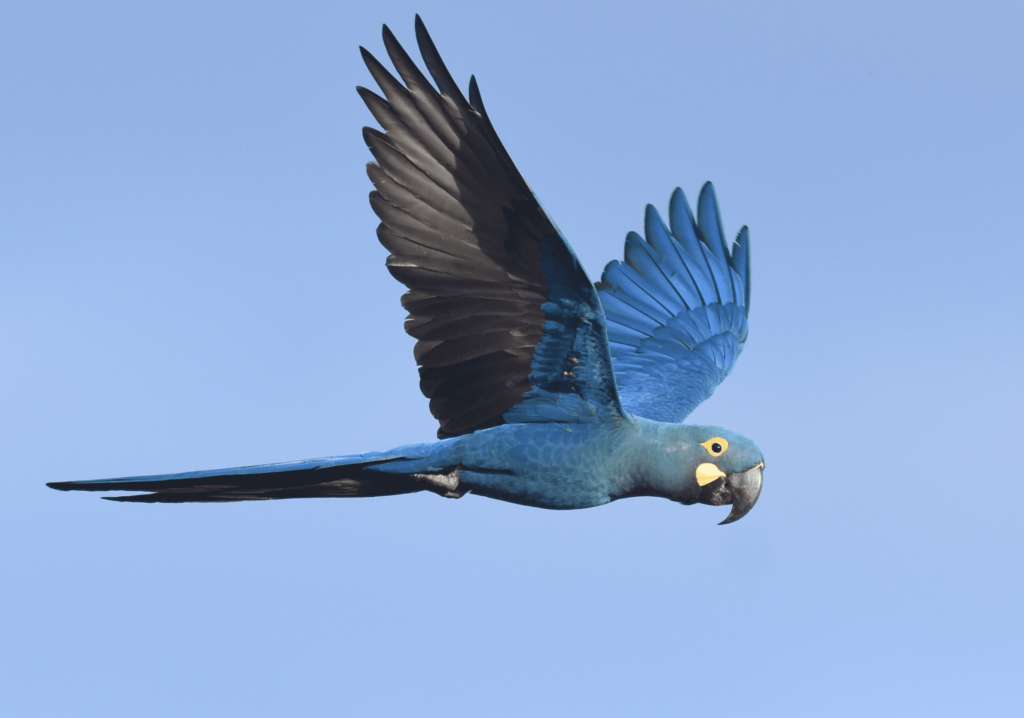Status:

Collaborators/Funders:
BioBrasil Foundation, Wildlife Conservation Society (partner) Museu de Zoologia Universidade de Sao Paulo, BioBrasil, Natural Encounters, Inc., Paradise Park, Disney Worldwide Conservation Fund, Keith Ewart Foundation, People’s Trust for Endangered Species, Barbara Delano Foundation
The Lear’s Macaw (Anodorhynchus leari) may have always been rare but trapping, logging, persecution and hunting have driven numbers down further. Emerging threats include poaching related to honey-gathering and powerline collisions. By 1983, numbers were down to just 60 birds but by 2001, thanks to conservation efforts and improved survey methods, counts increased to 246 birds and then 1123. The population is now almost 1700.
The WPT has long supported work surveying the macaws’ population and researching its ecology, detecting potential problems such as low juvenile survival, uncovering the species’ reproductive biology, documenting the percentage of fertile eggs laid per season and nestling survival, investigating the threat of invasive Africanised bees on chicks and adults and testing solutions to the problem, and studying disease prevalence in the wild population.
In 2016, the team discovered that the macaws had returned to a historical breeding site after an absence of four decades. In 2023, 12 birds were rehomed at Paradise Park UK from a different facility, having been confiscated in the mid-1980-90s. The WPT provided funding for new facilities to house the birds at Paradise Park and will collaborate with them to repatriate the macaws or their offspring to Brazil.
Status: IUCN Endangered / CITES Appendix I
Population: 1694 individuals
Range: Lear’s Macaws are found in two colonies at Toca Velha and Serra Branca, south of the Raso da Catarina plateau in NE Bahia, Brazil.
Natural history: This macaw is seen in dry, rugged caatinga (thorn scrub) terrain, mostly in areas with Syagrus coronata palms. A staple food item is Syagrus palm nut, but fruits, agave flowers and maize also taken. Liquid from unripe palm fruit is a major source of moisture. It is usually seen in flocks, roosting communally in sandstone crevices. Forages before dawn and returns at dusk. Breeding is October-January; nest is in a cliff tunnel.
